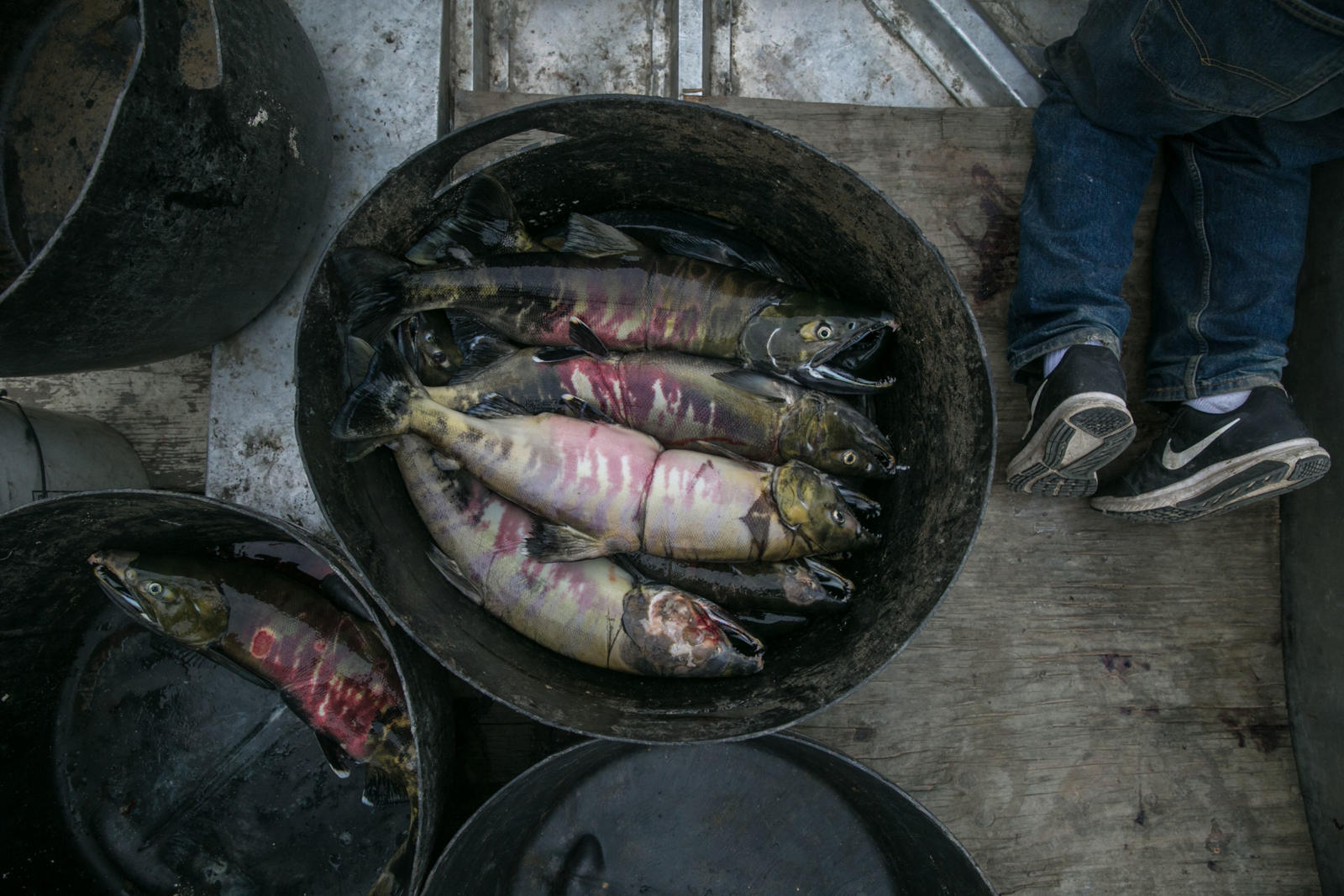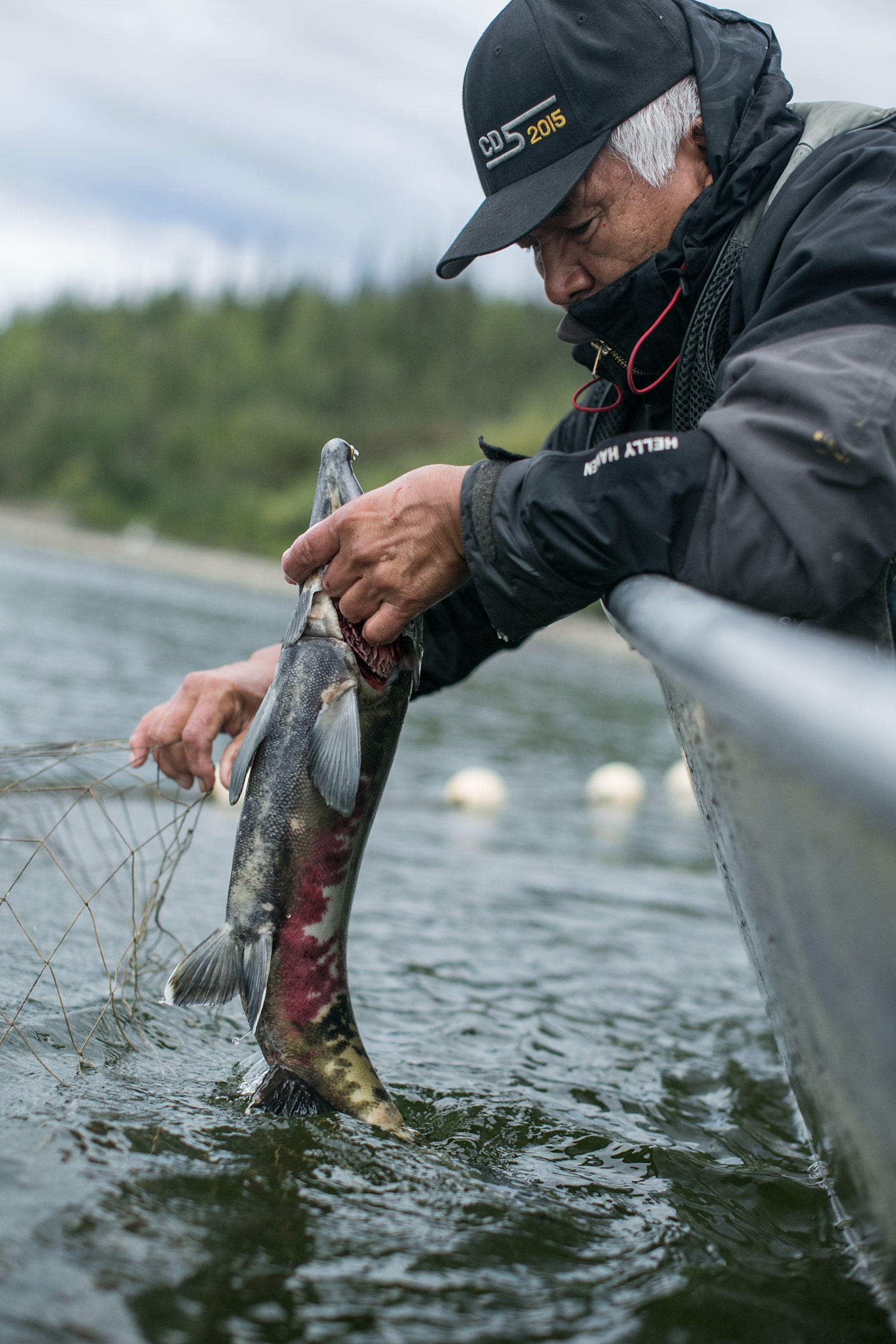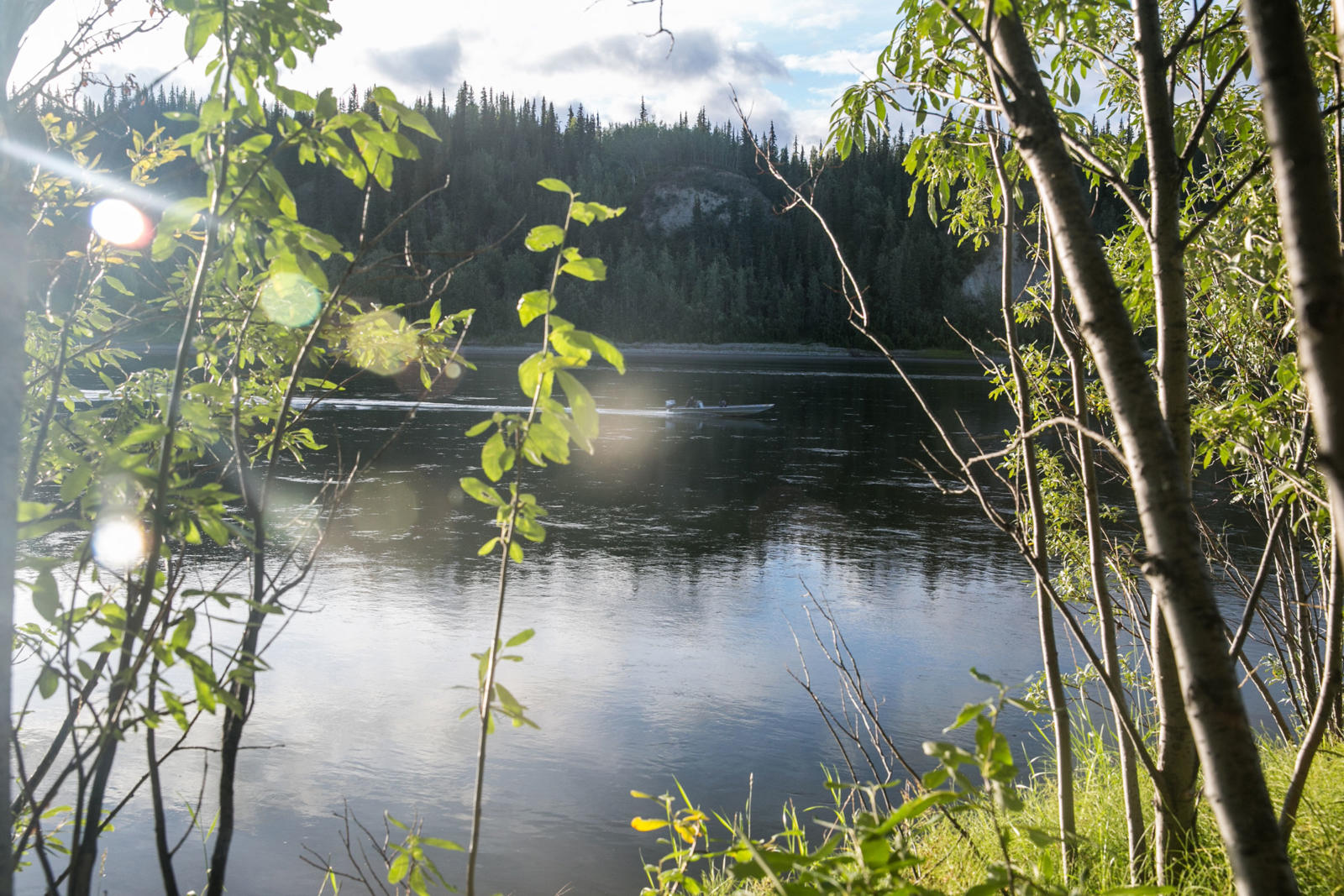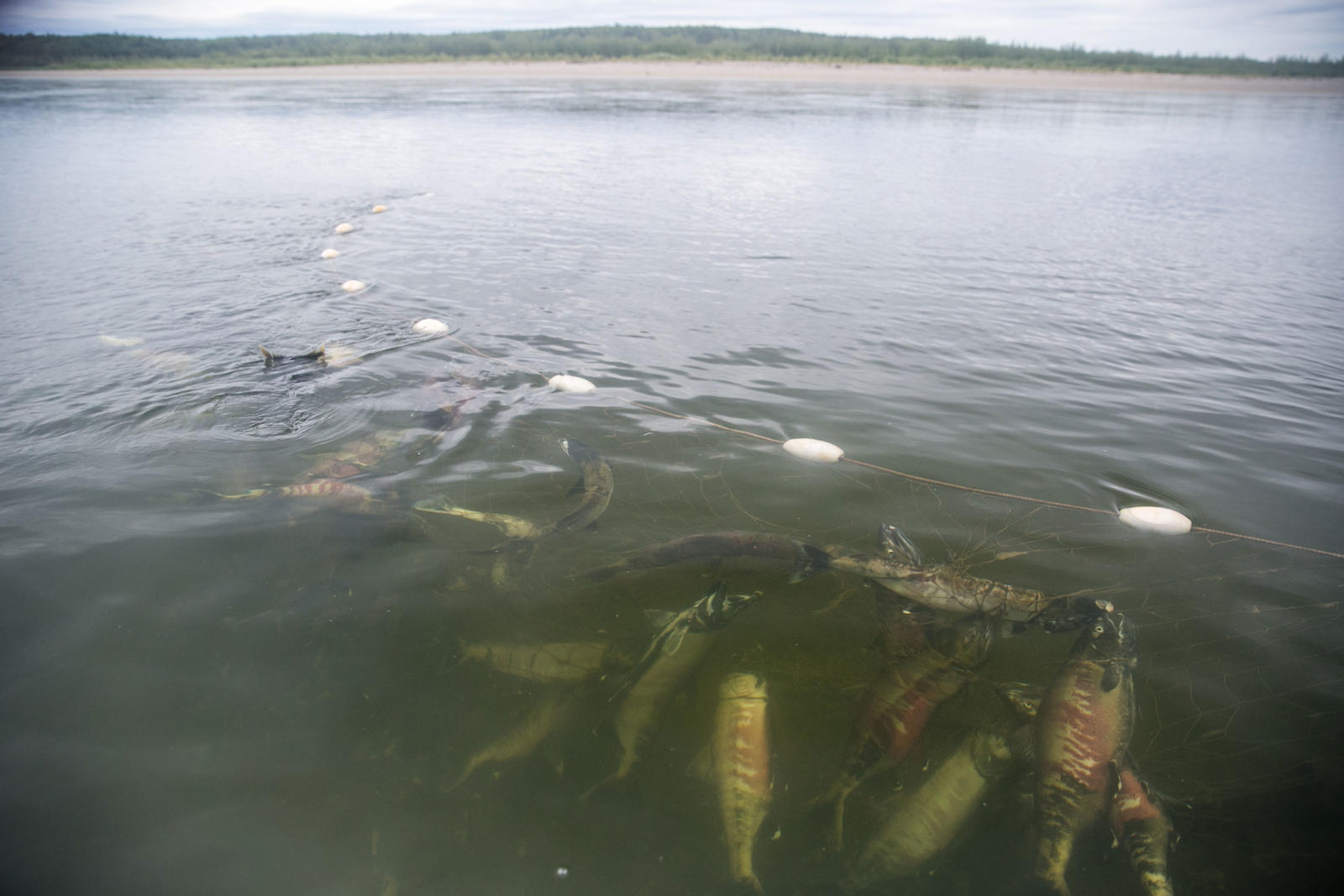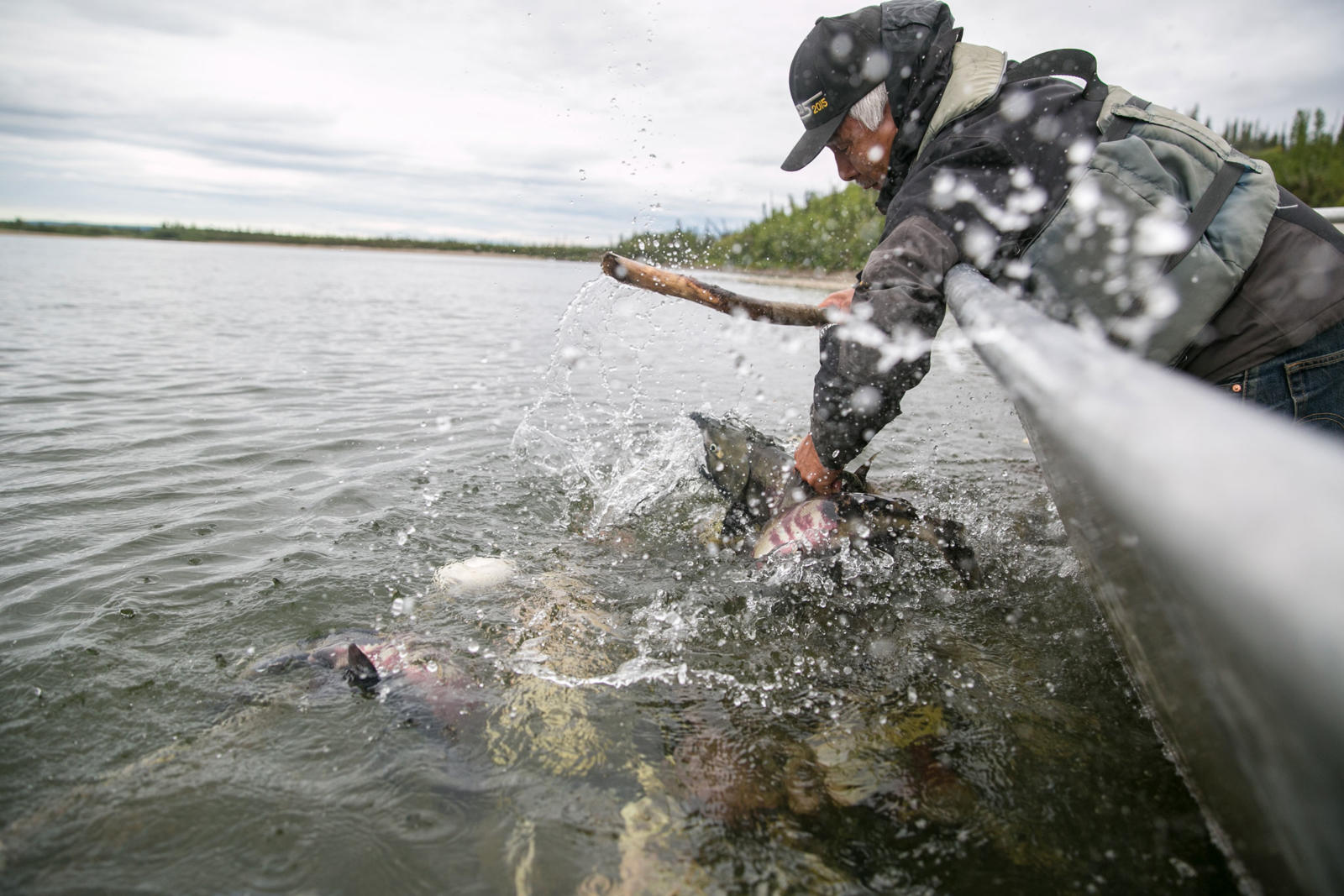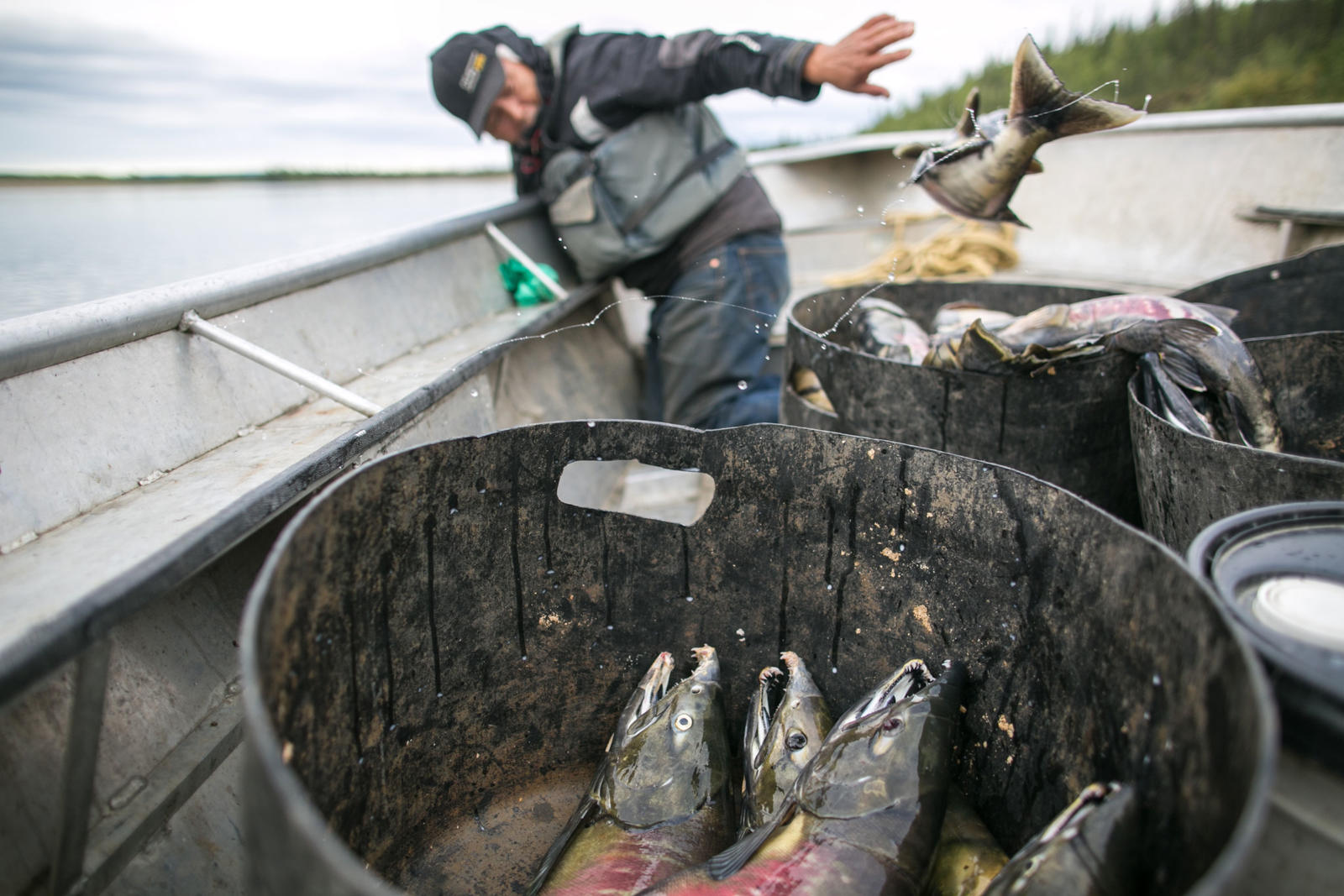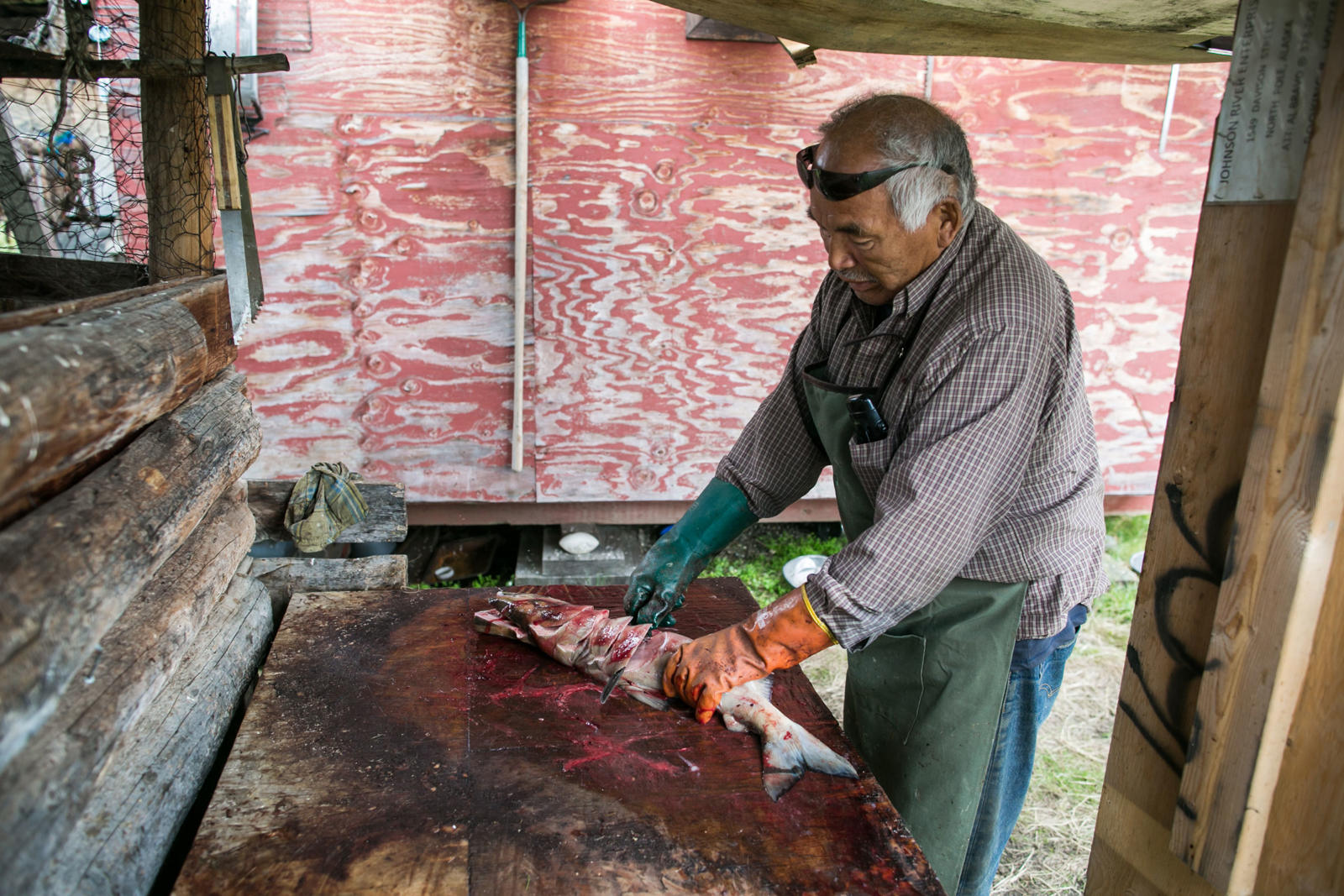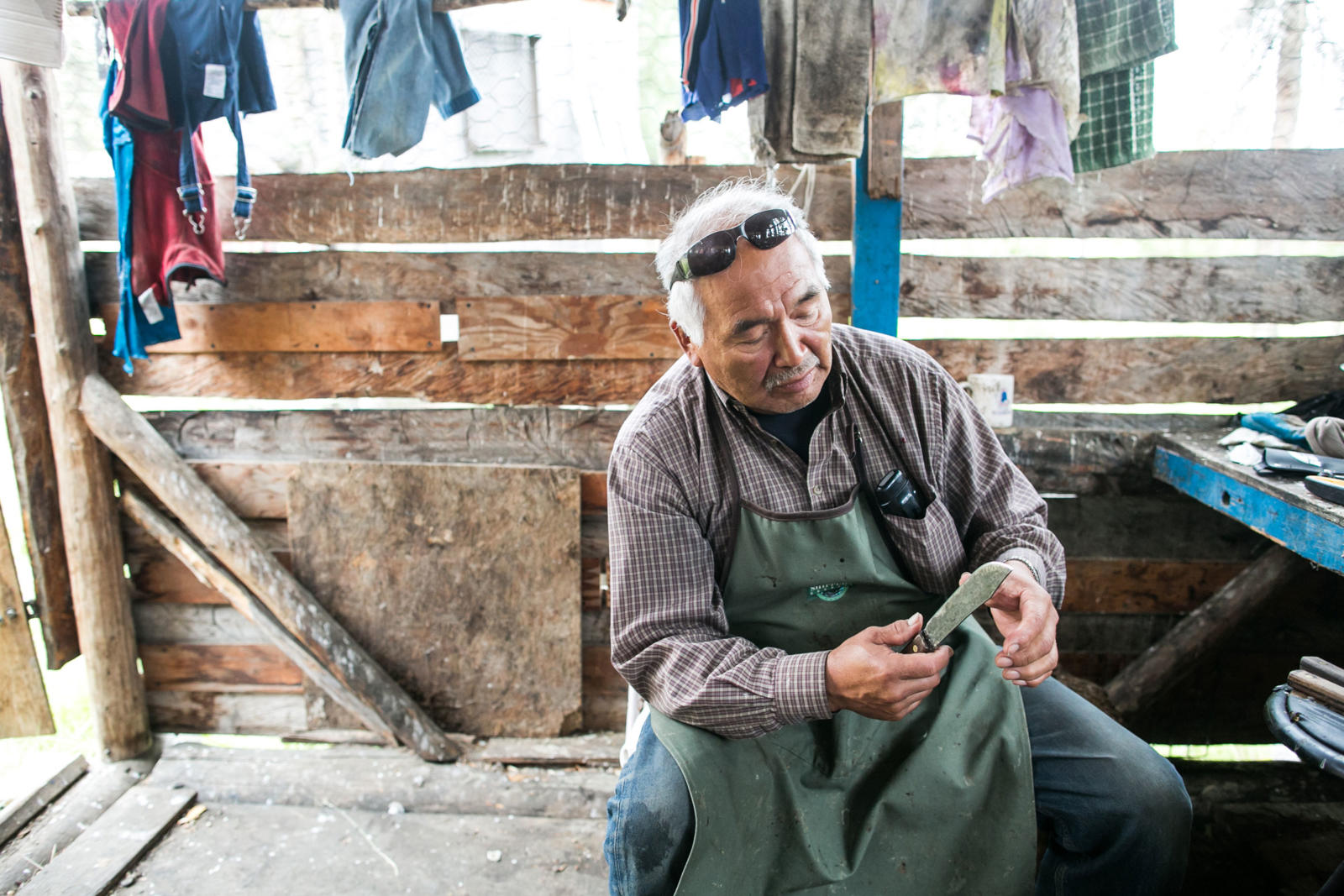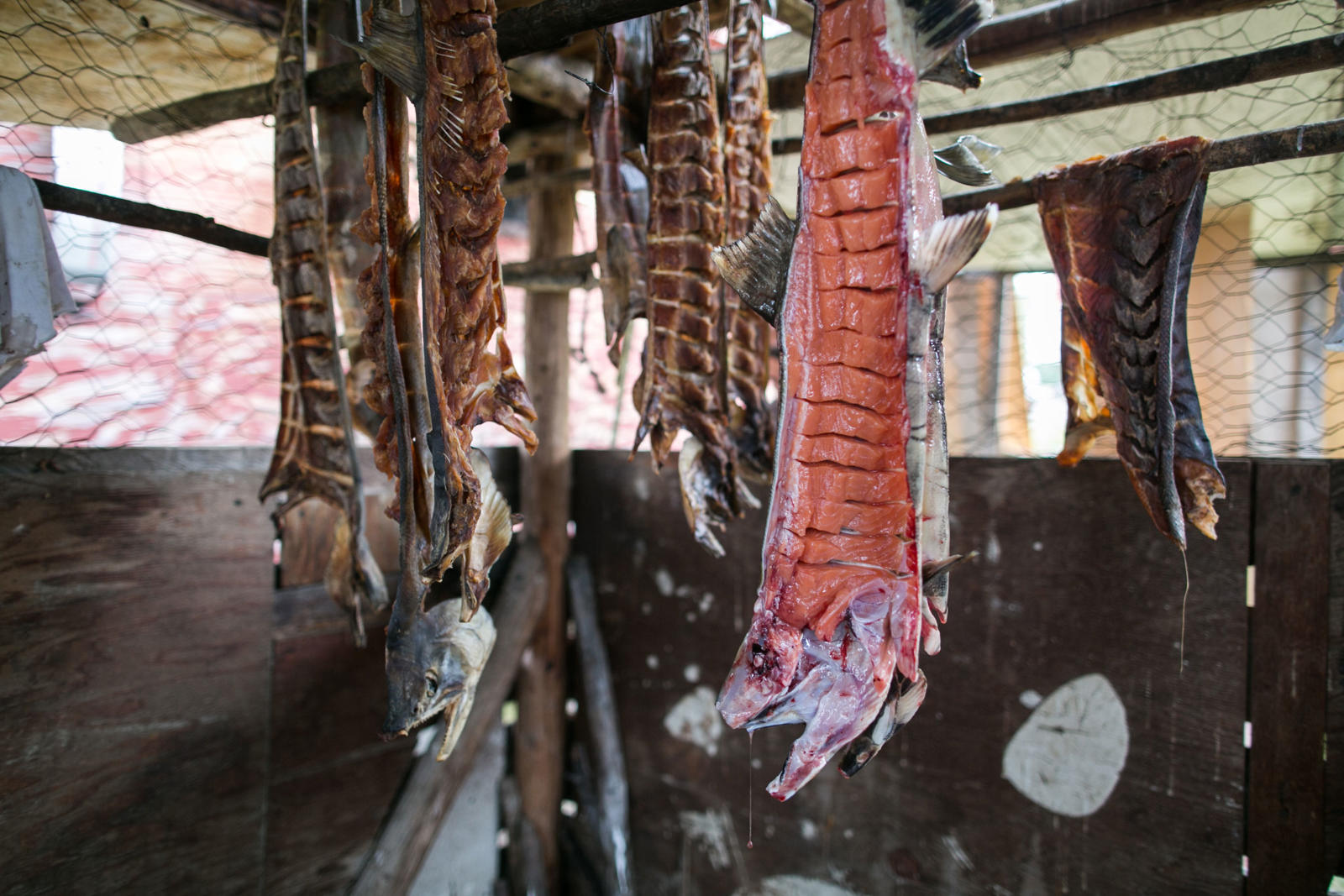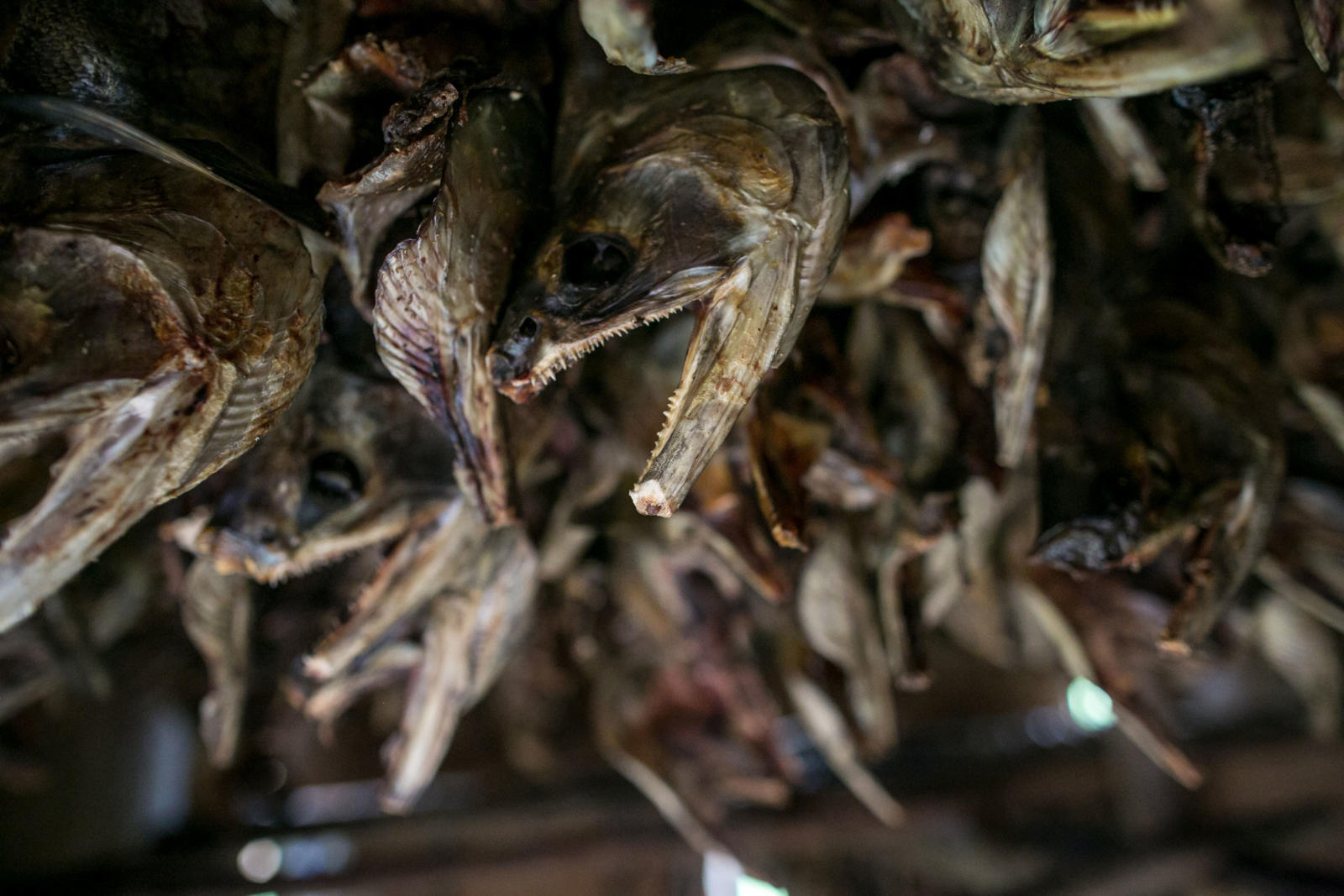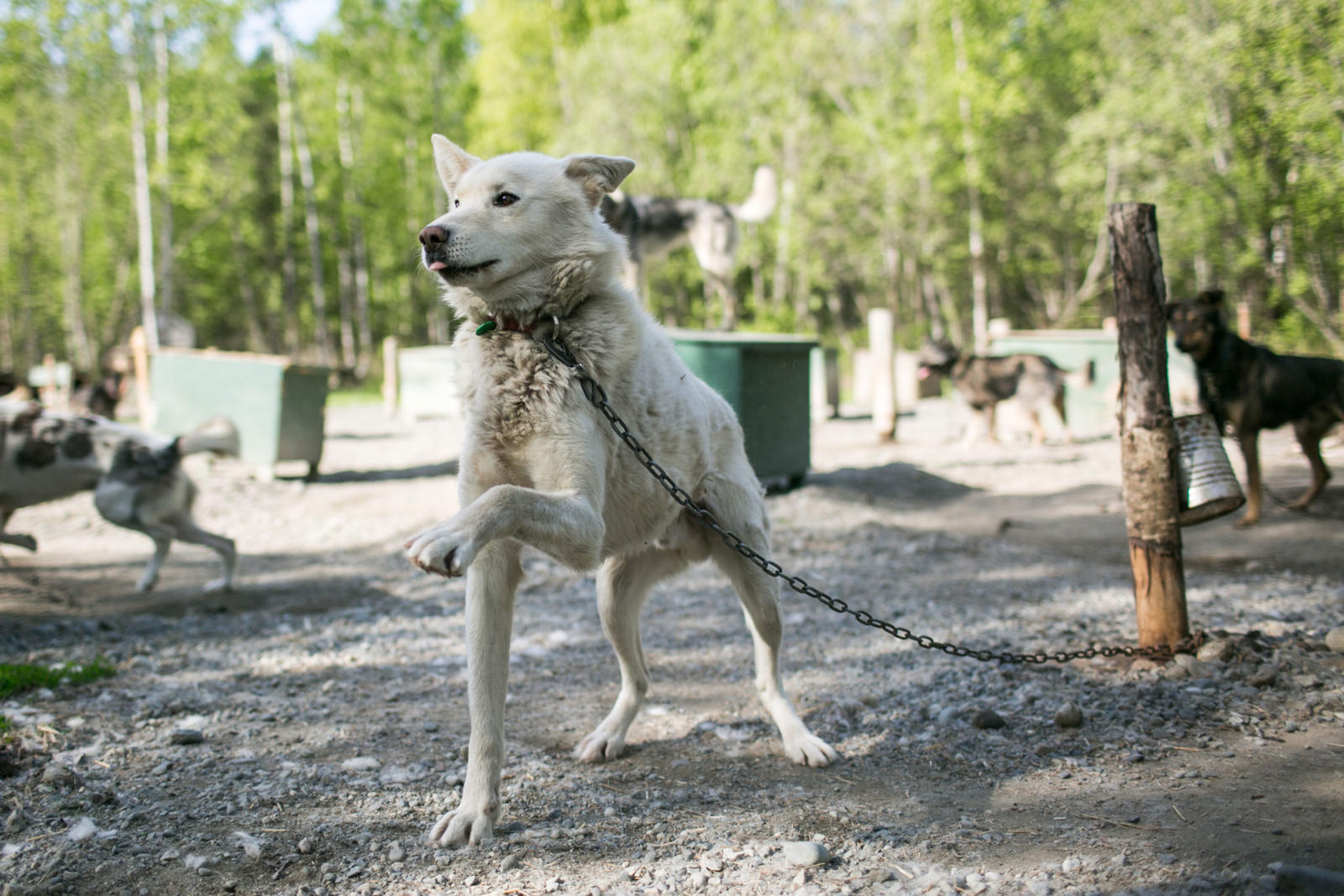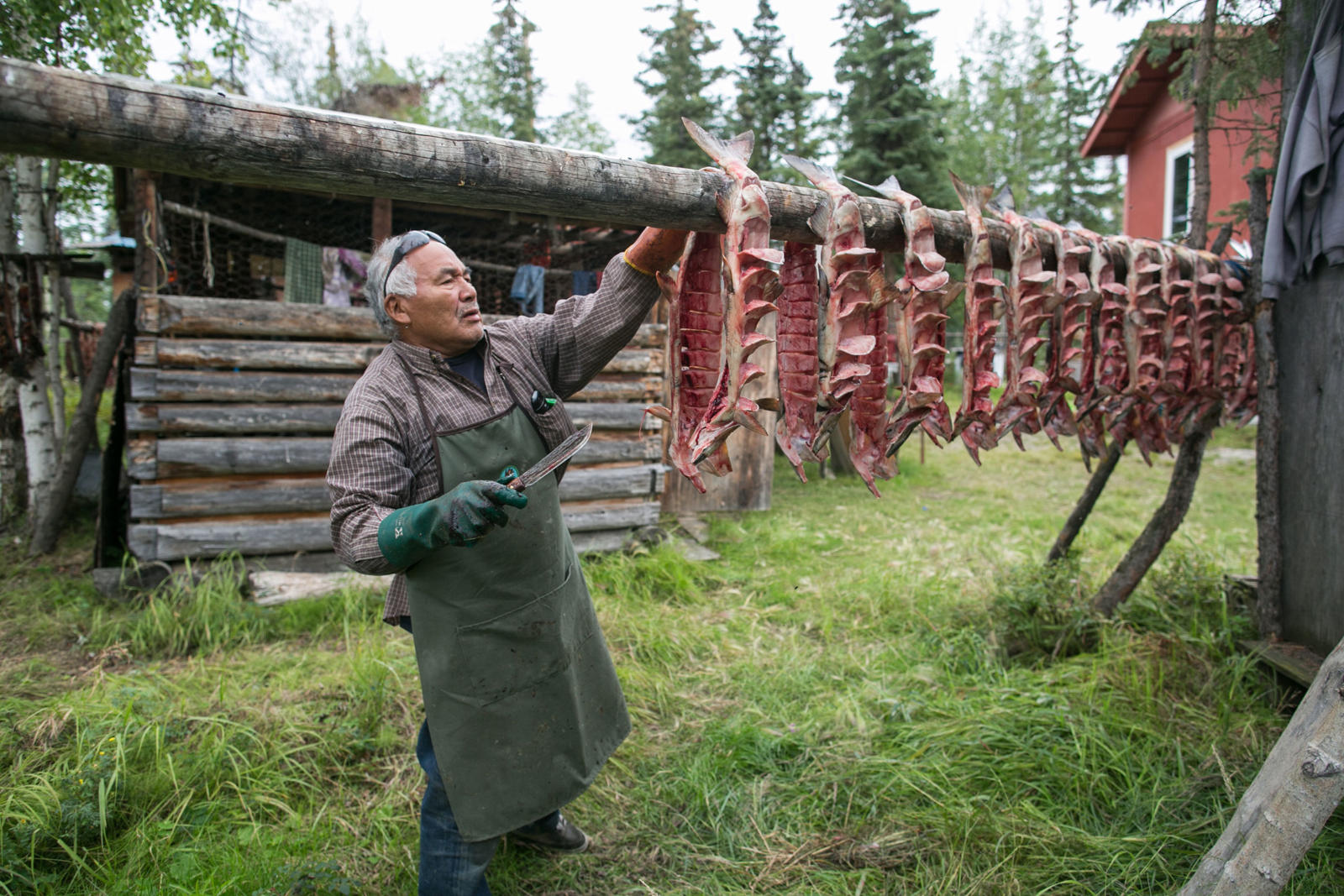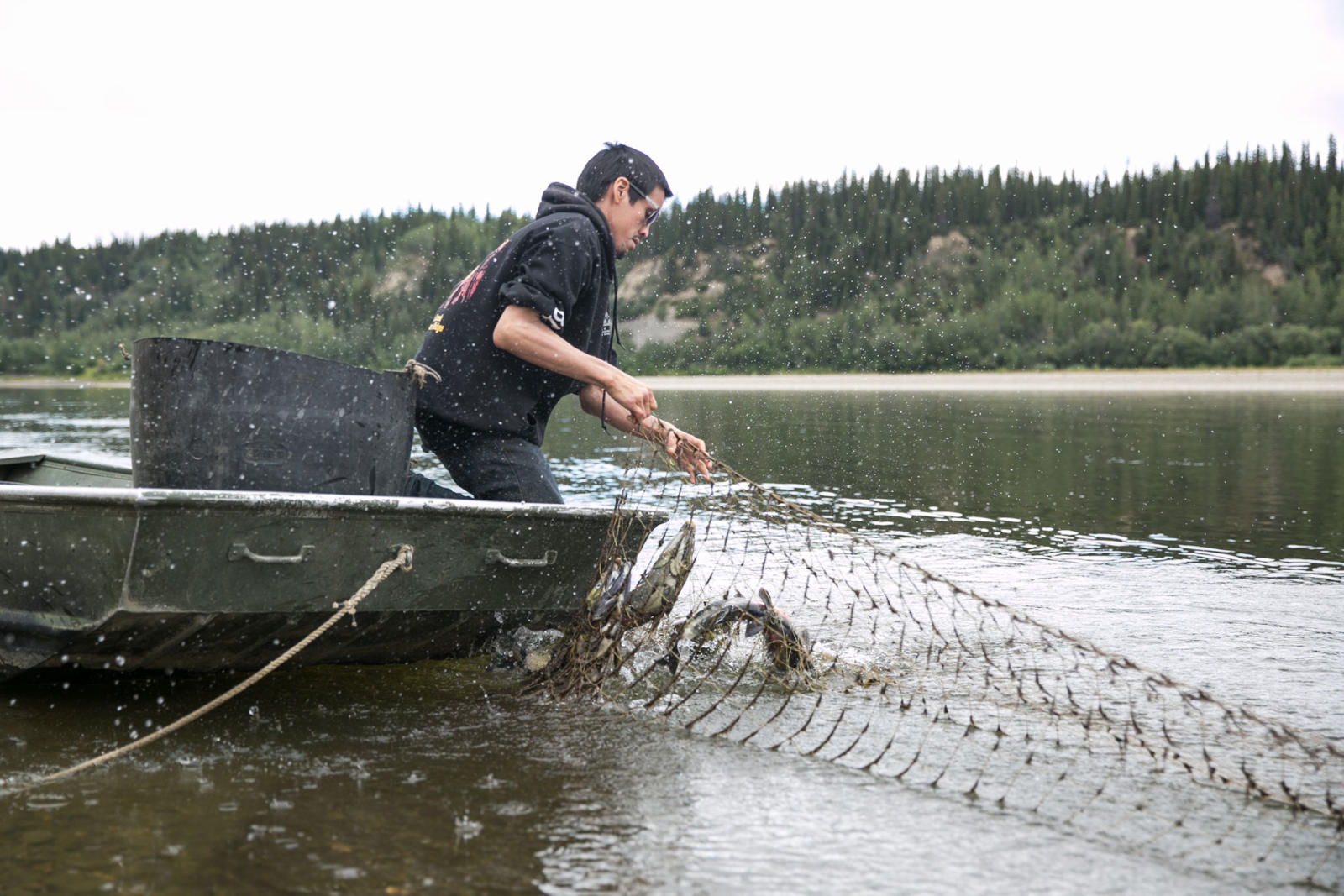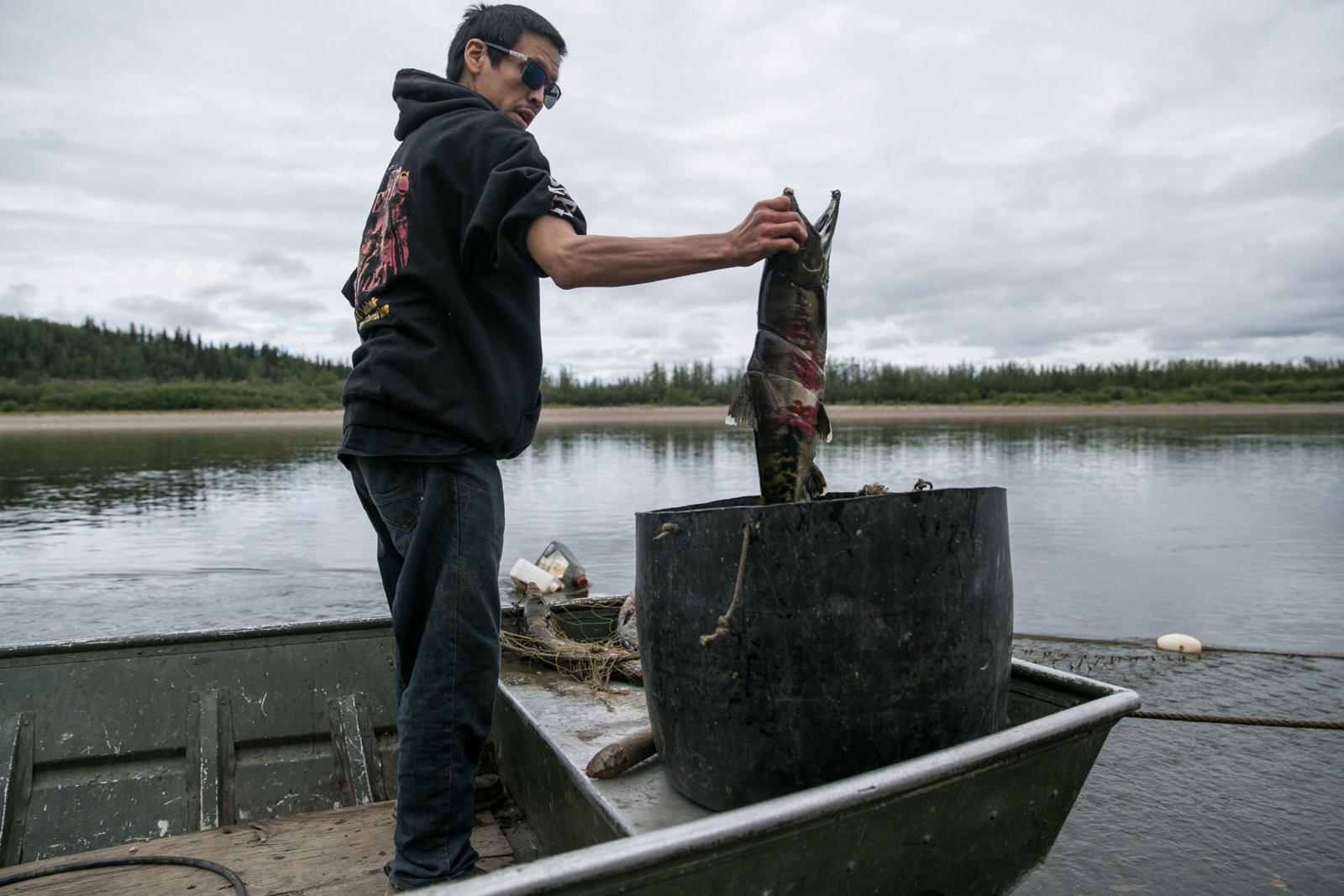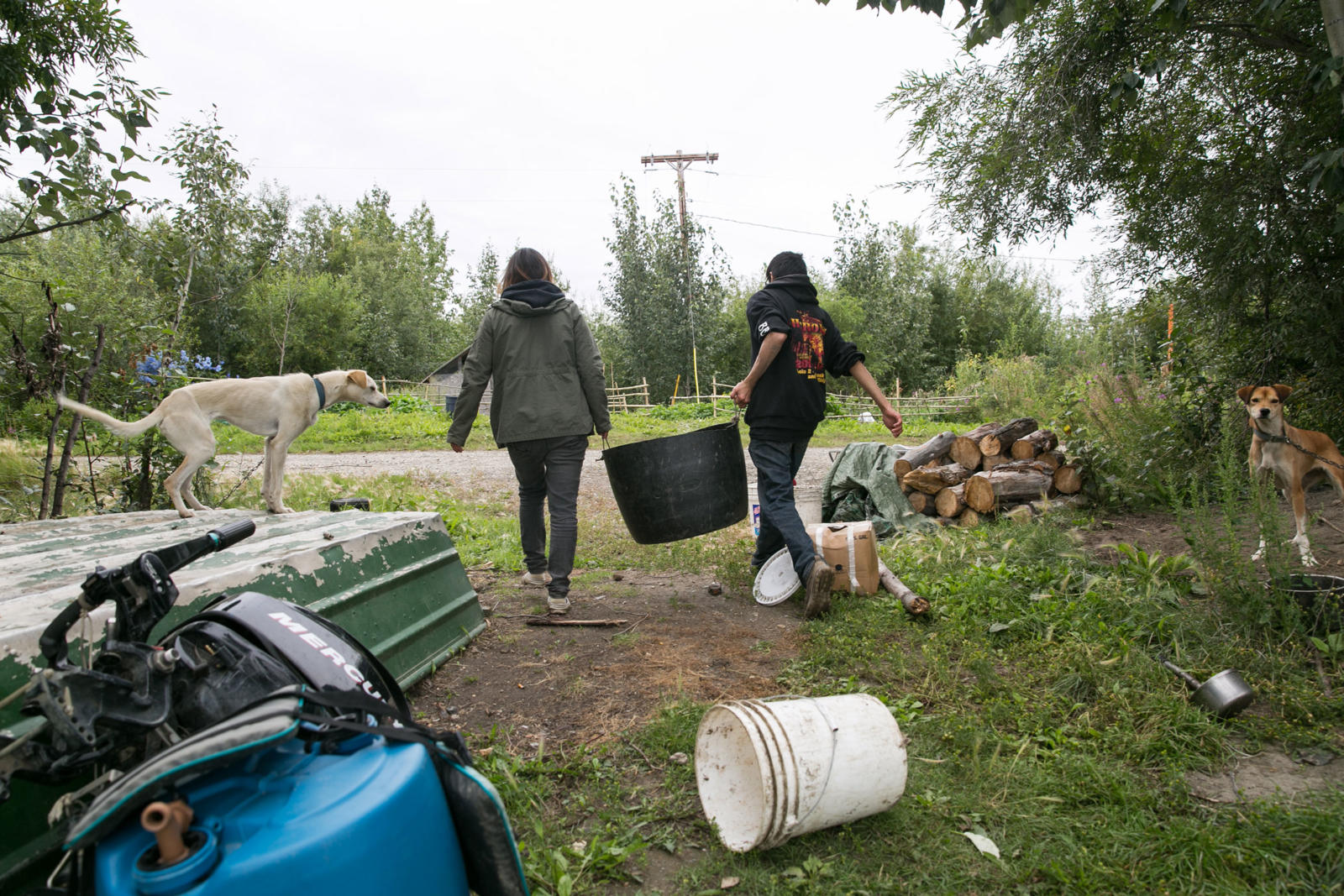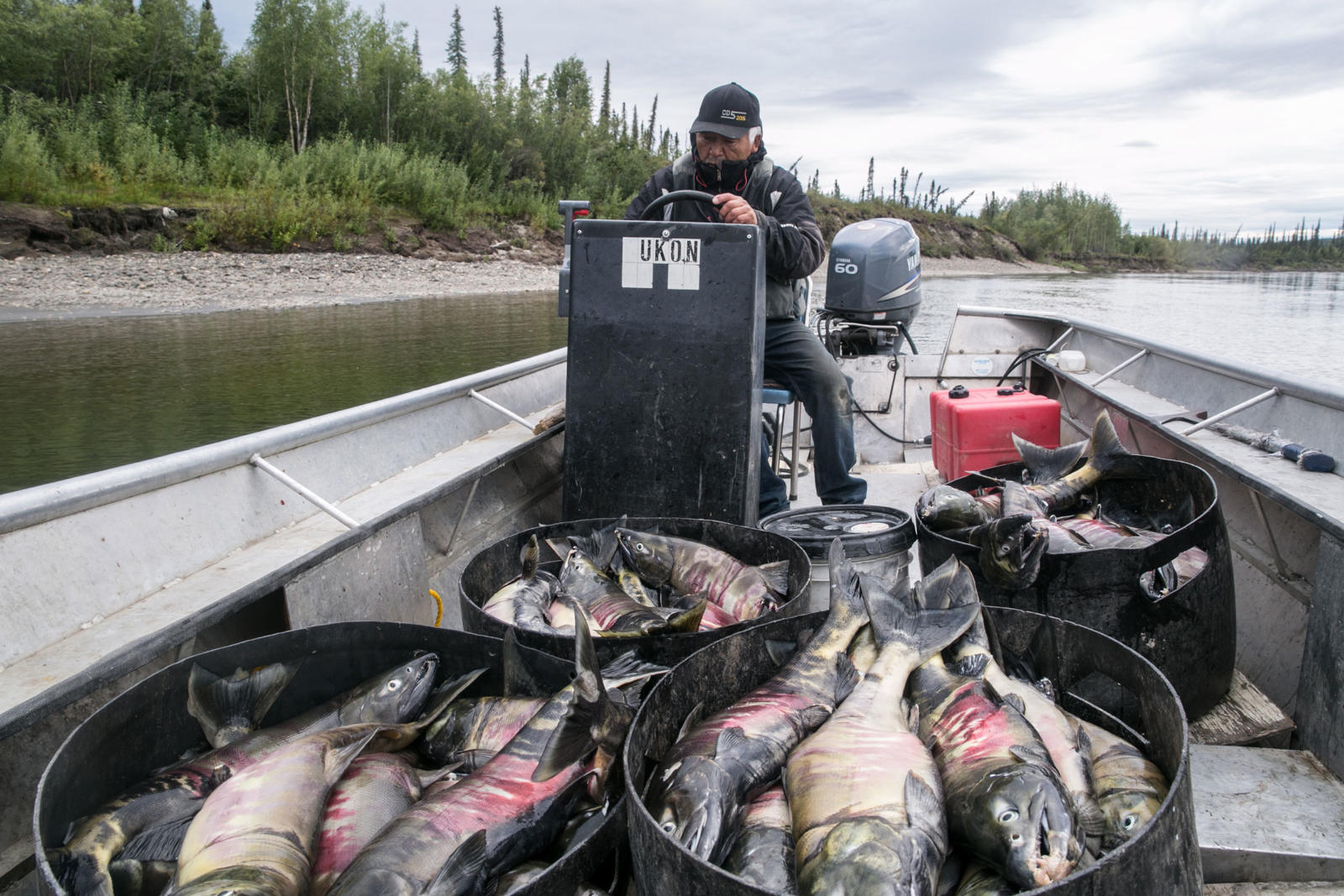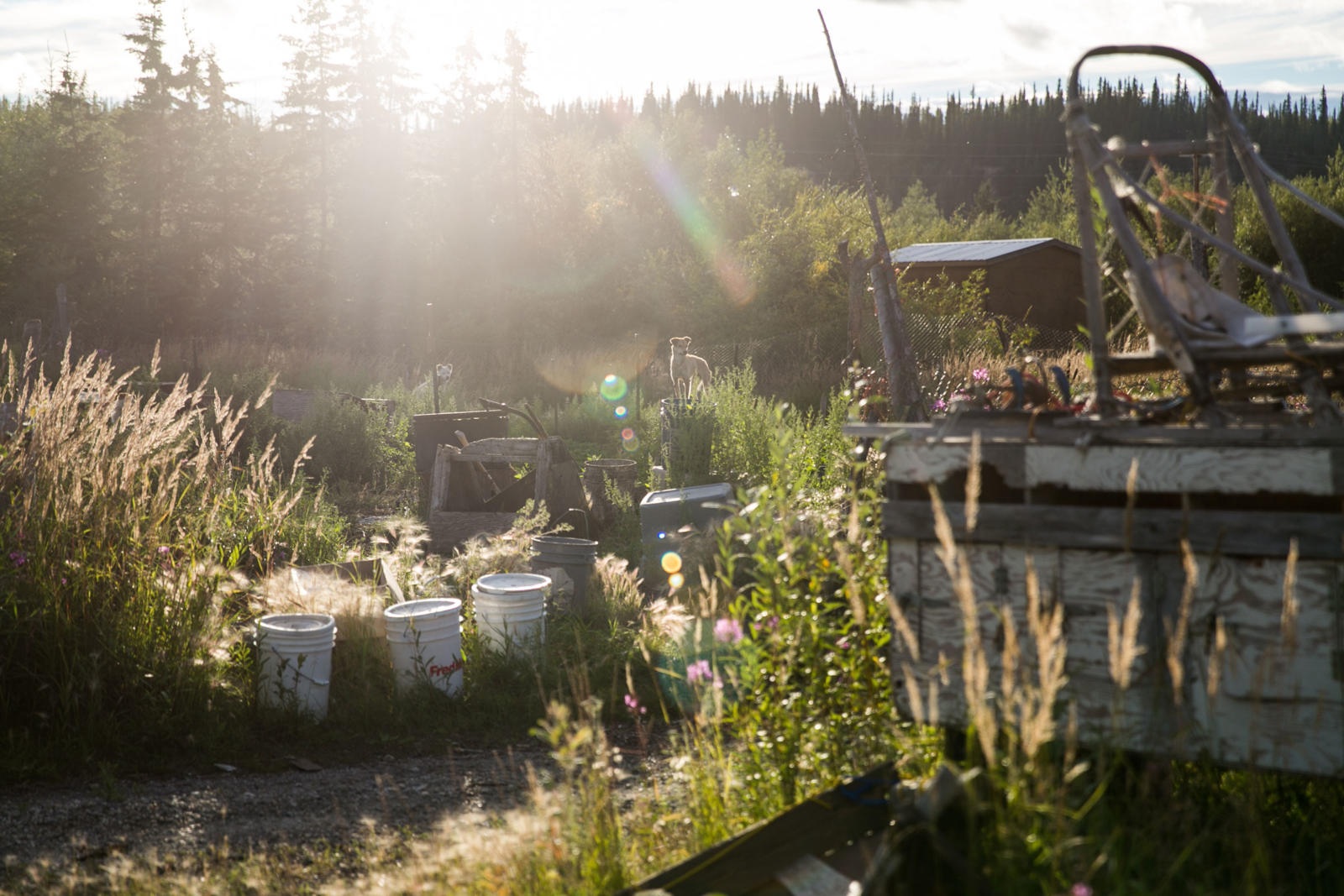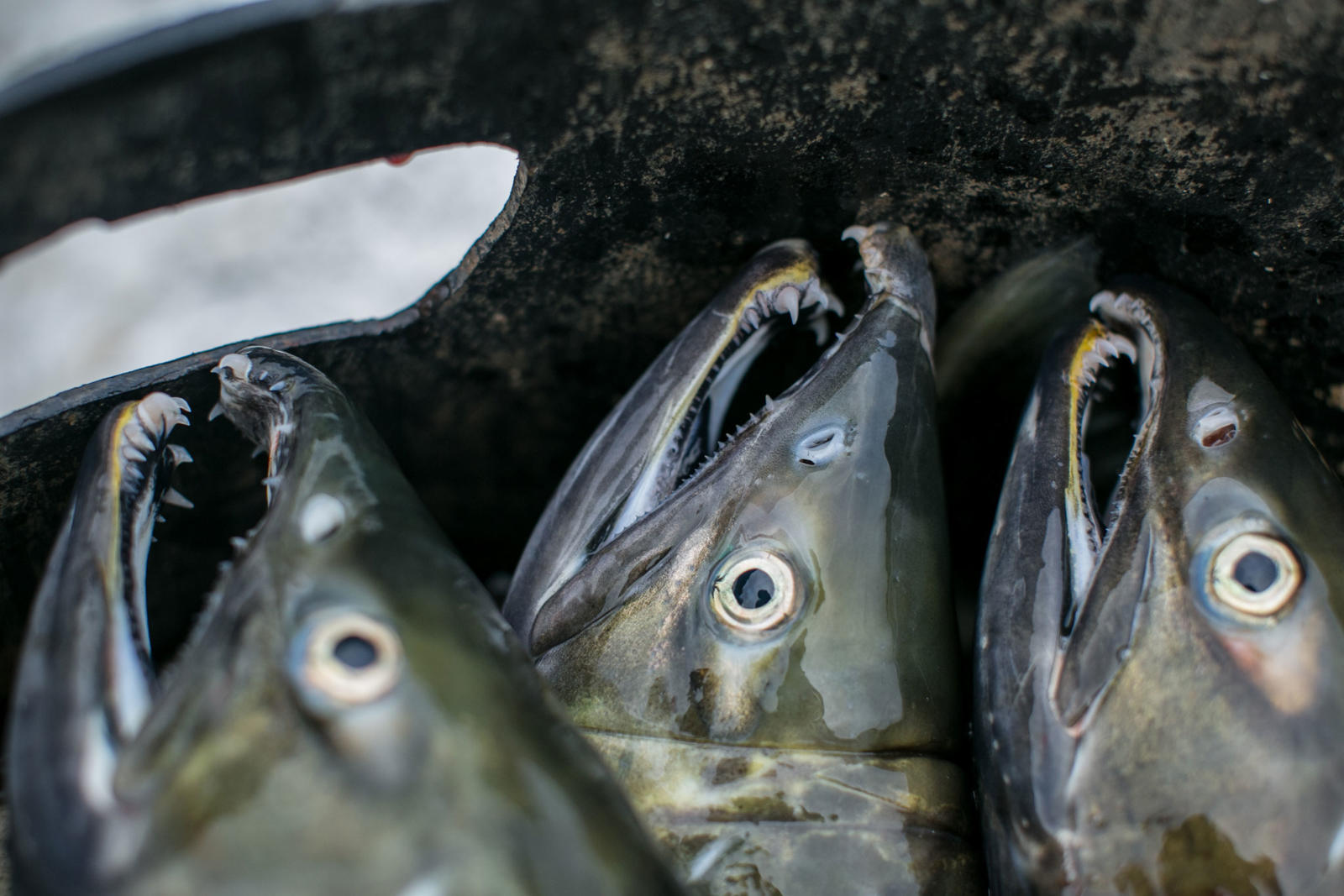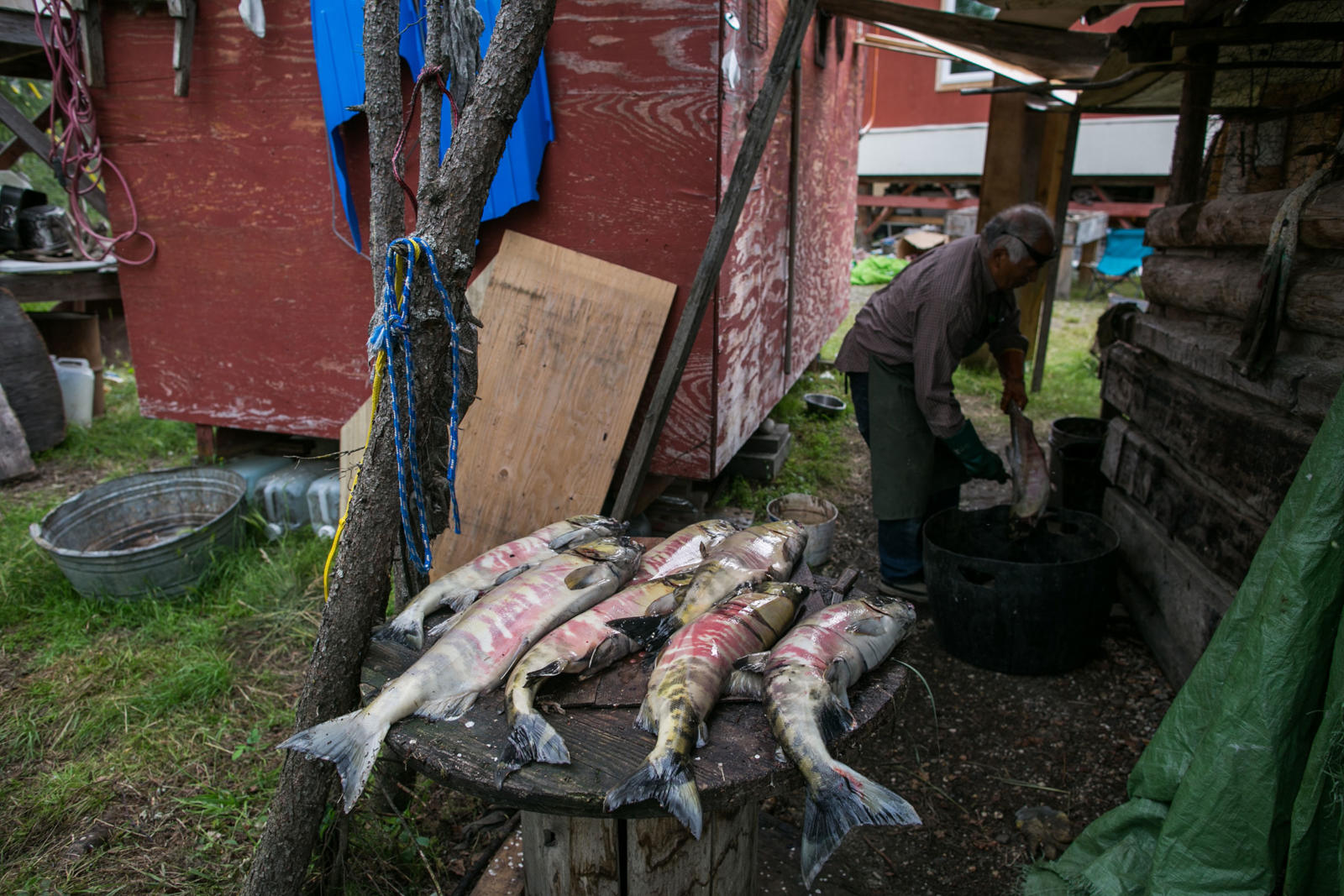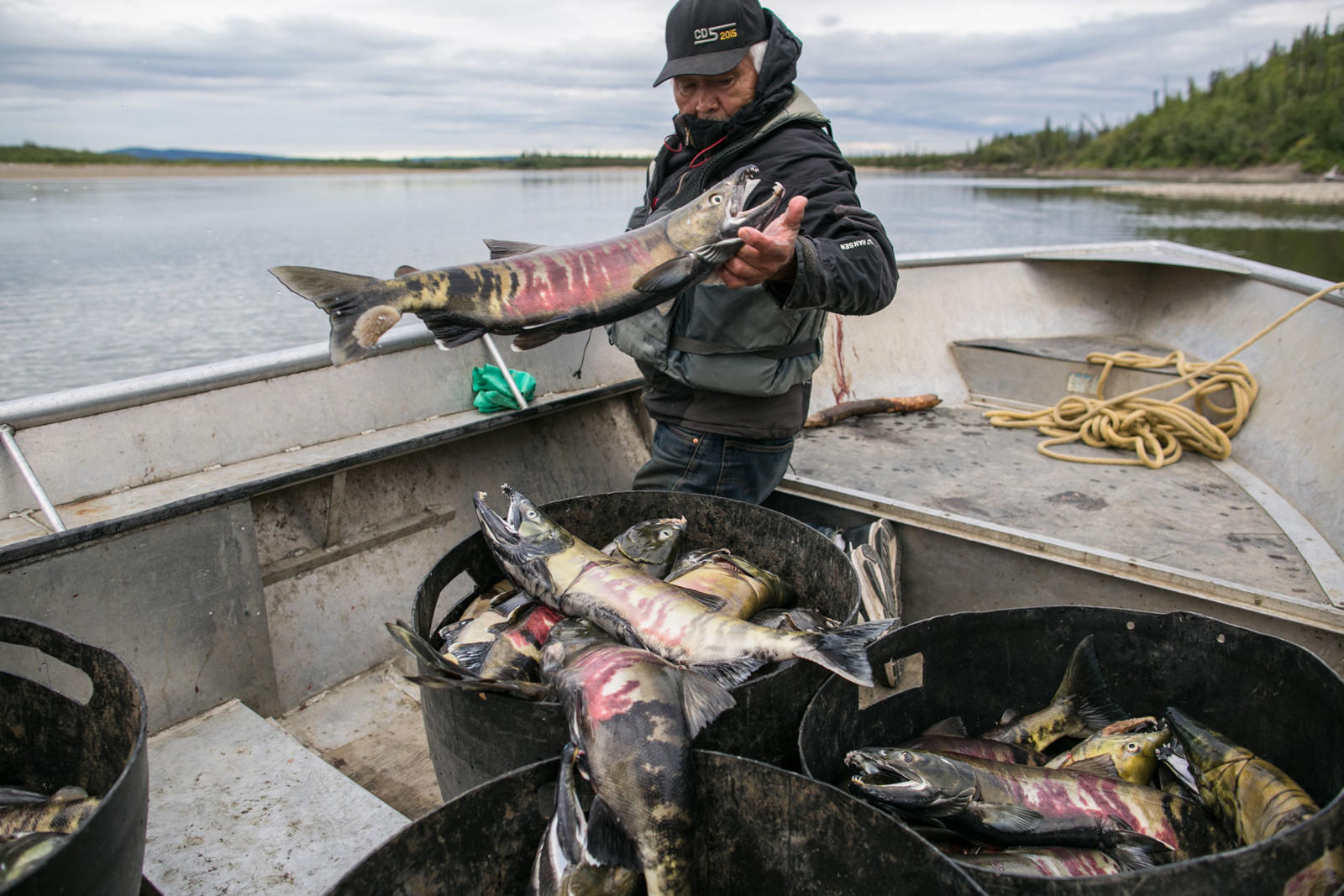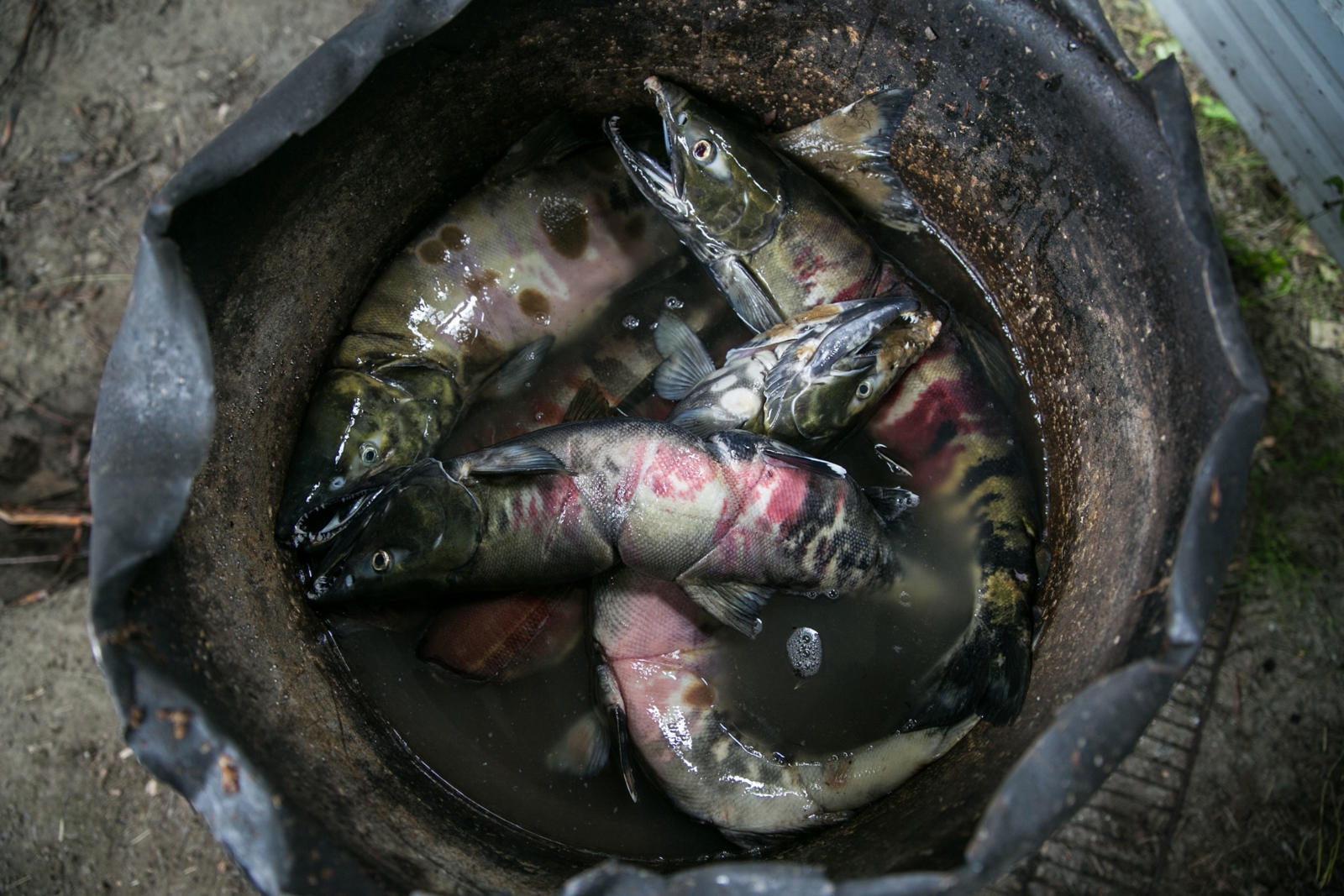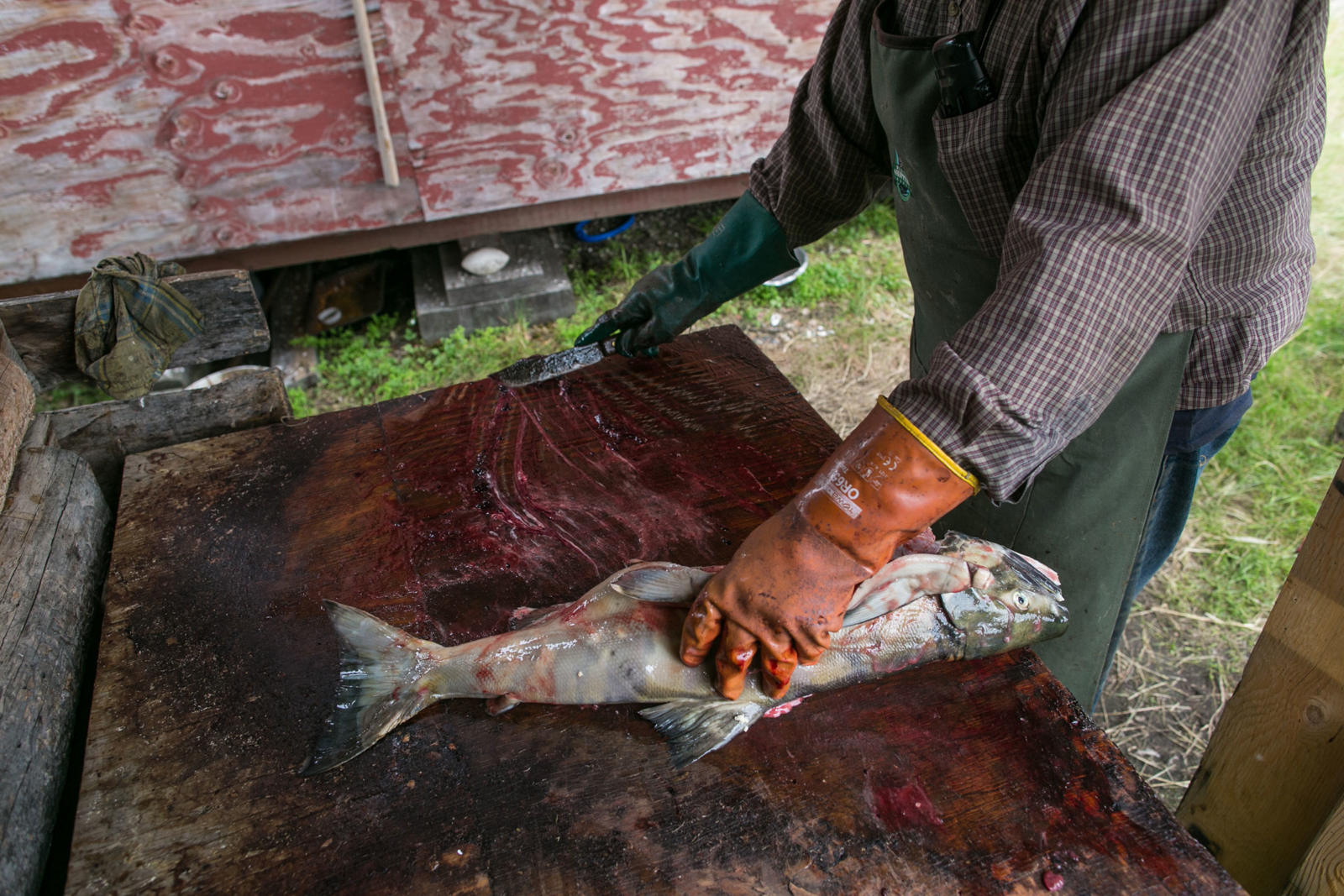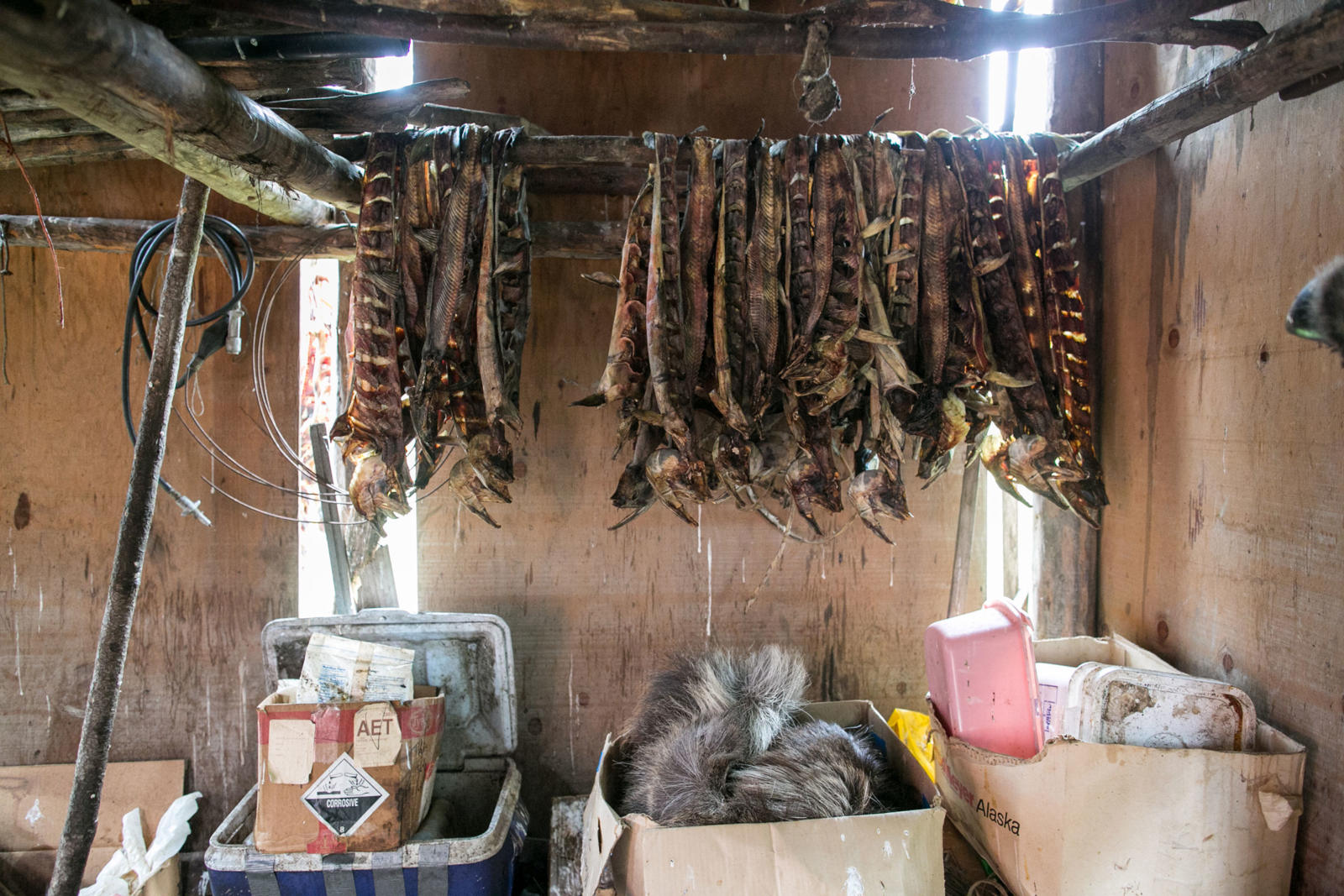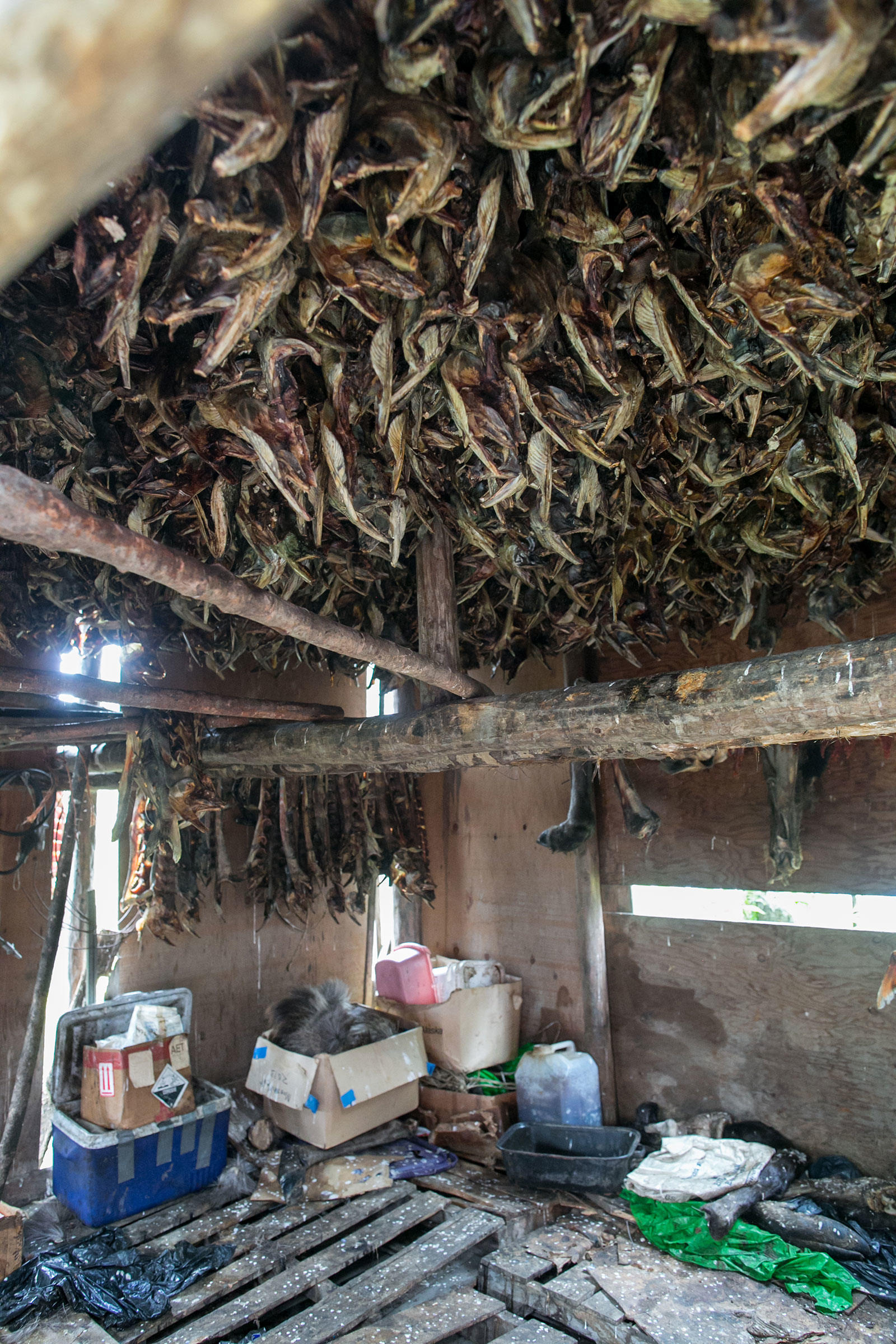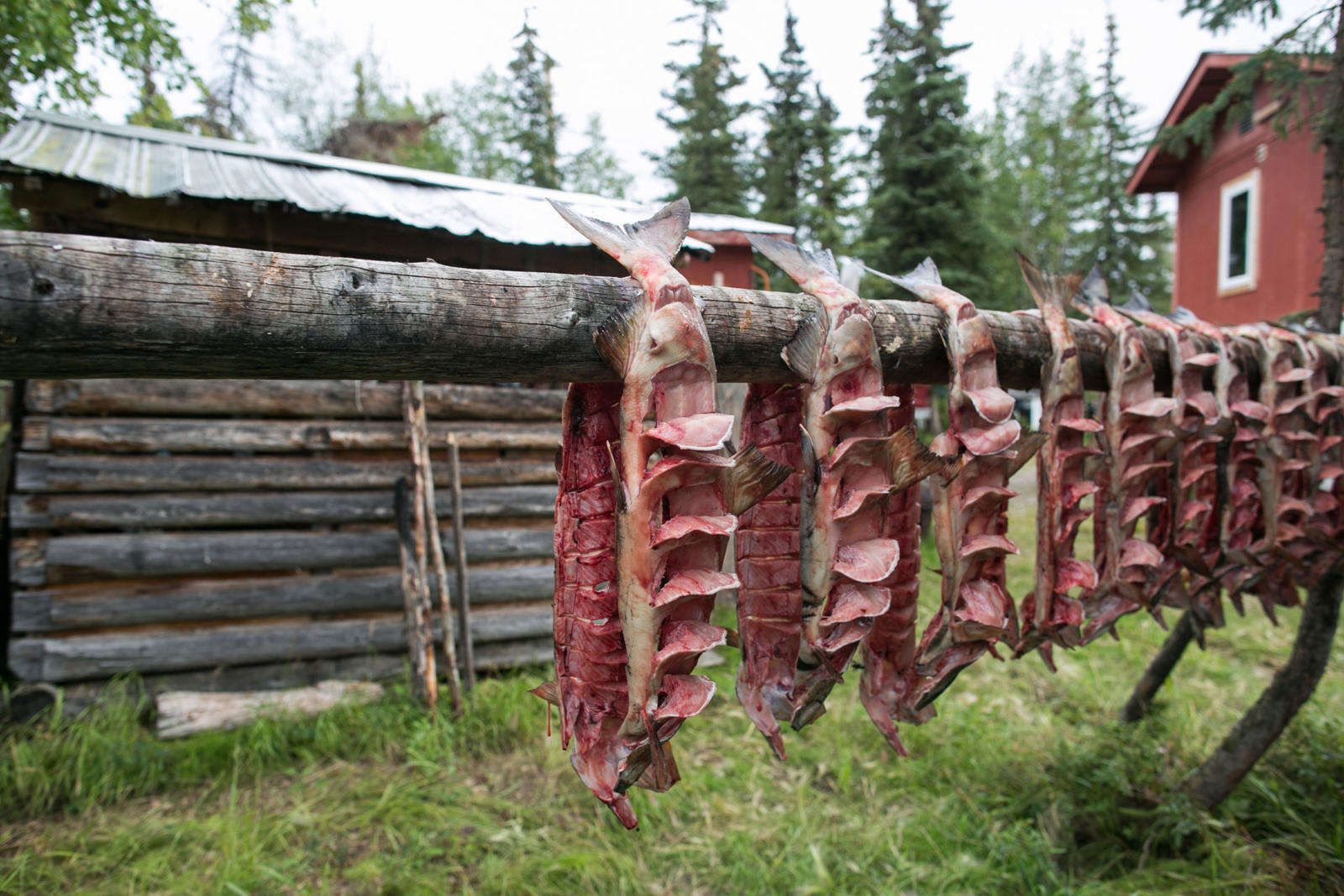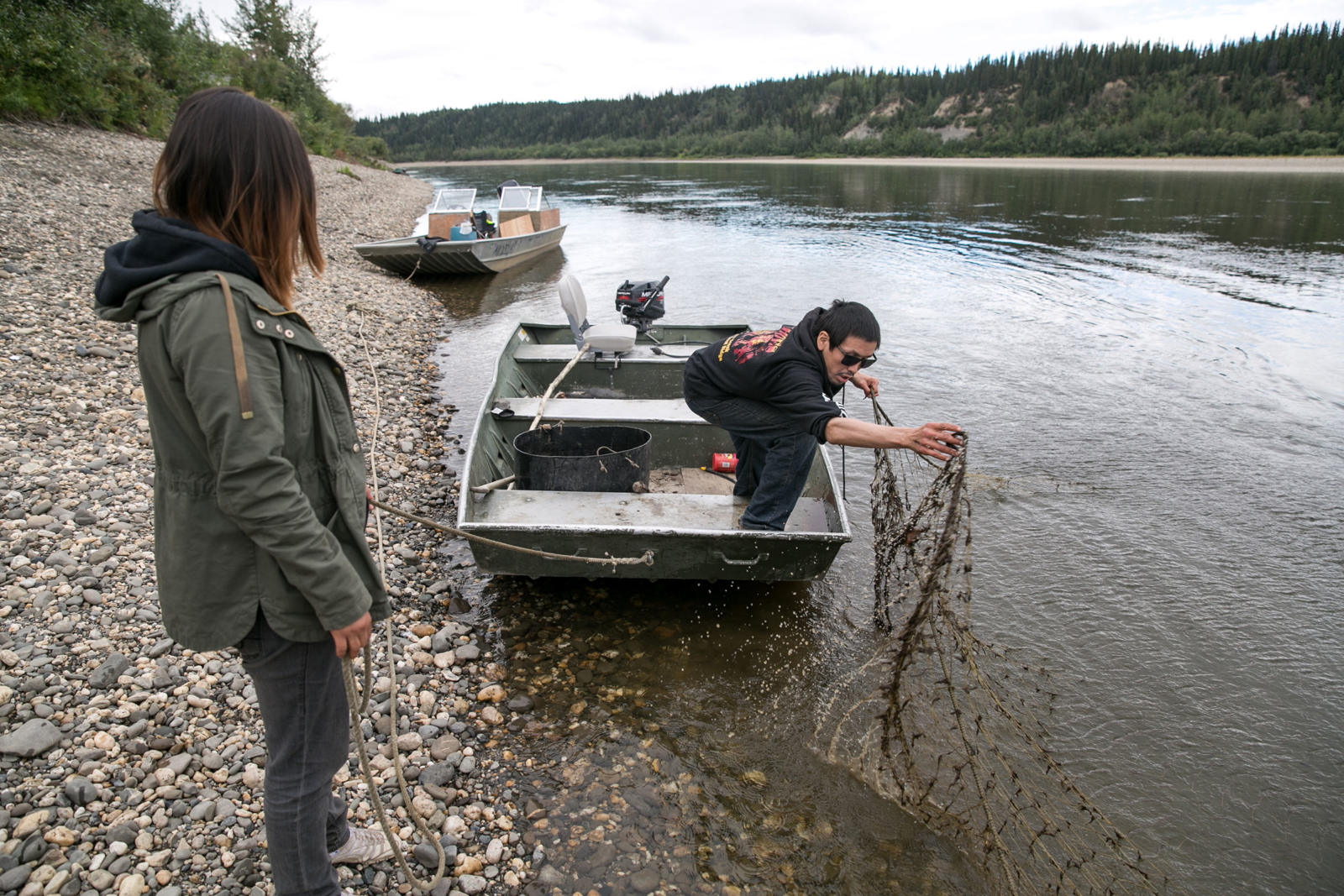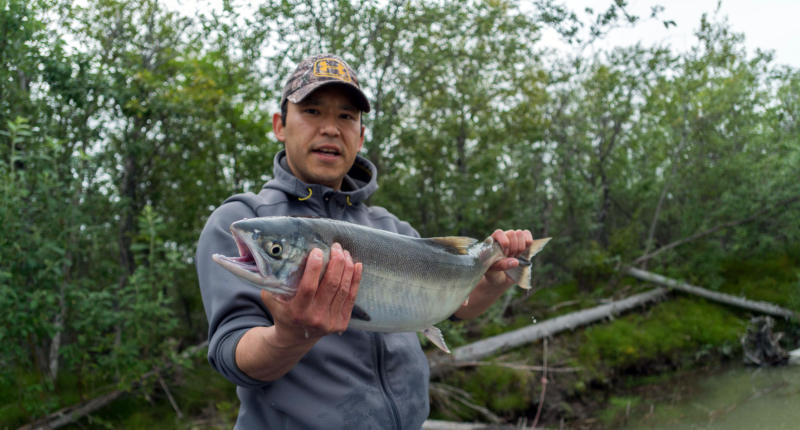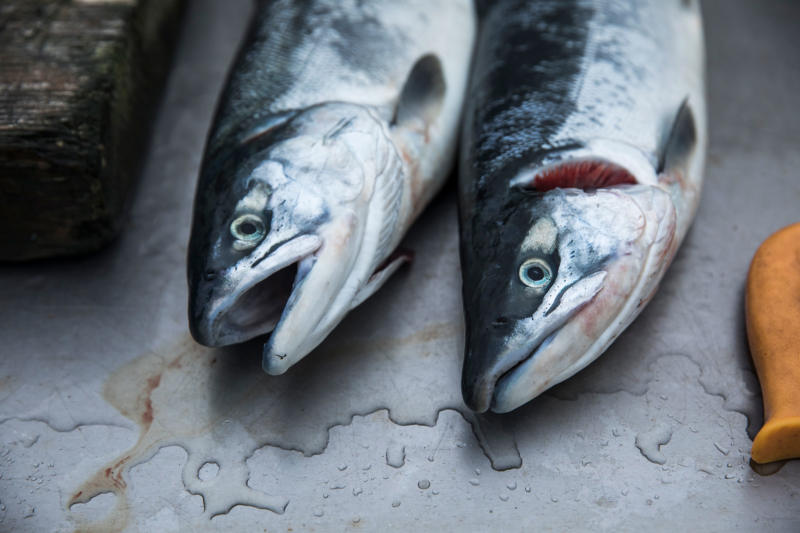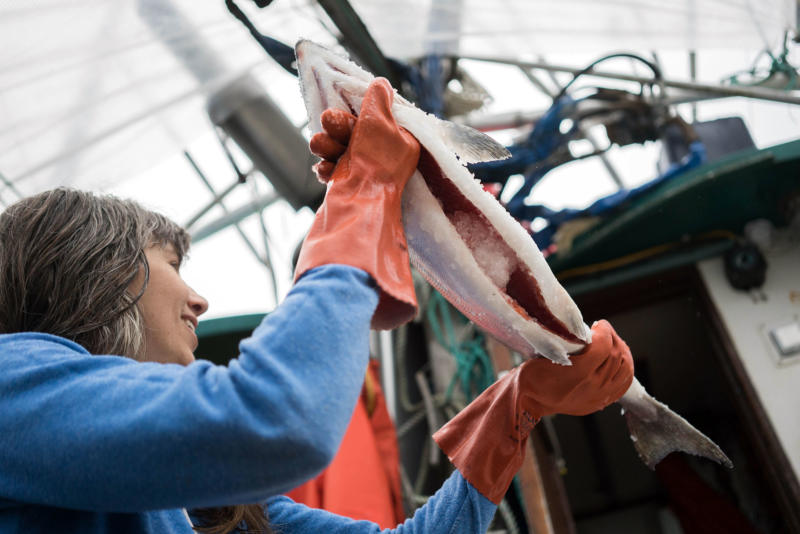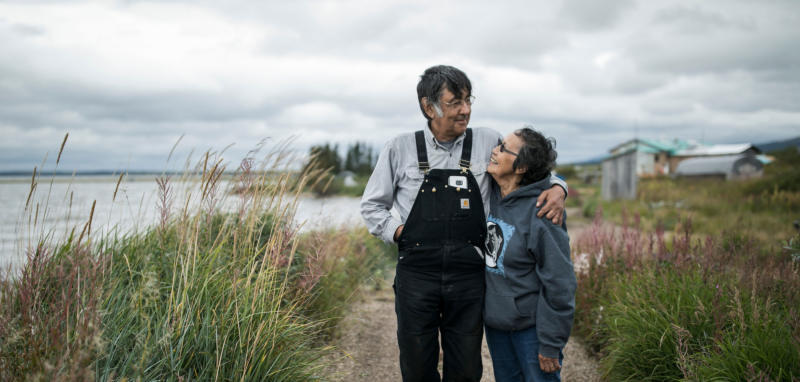During any given day on the upper Koyukuk River village of Allakaket, you may find people fishing, picking berries, gathering wood, camping, swimming or working. Like many communities in Alaska, people do what they need to do to survive the harsh winters and stay busy in all seasons. They may spend their fall times harvesting moose, caribou or Dall sheep, but summer is mostly focused on fishing.
Steve Bergman is not only providing for his large extended family by fishing for salmon, he’s also feeding his dog team. He estimates he needs to catch about 2,000 chum salmon to feed his 17 dogs. Being nutrient rich, salmon provide a much needed resource for an active dog team. Chum salmon for dogs is cut in a way that preserves as much of the salmon as possible. For instance, the salmon is cut from the tail all the way through the head and dried.
